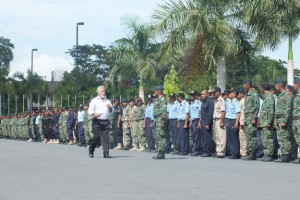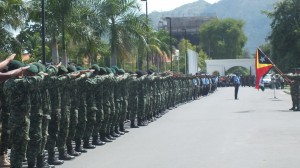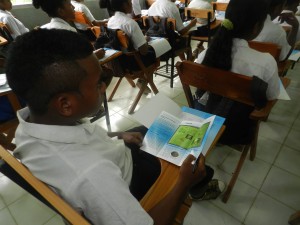Timor-Leste and in particular Dili have been seeing a transformation over the past few years. As more oil revenue moves from the government budget and into infrastructure projects, Timor-Leste is becoming more and more developed. This is none more apparent than with the roads of Timor-Leste. What were just a few years ago damaged, potholed tracks are slowly being transformed into smoother, faster and better roads. This is an impressive movement for Timor-Leste and imperative if Timor-Leste is to become more efficient accessible country. It also however brings with it a new set of challenges and problems.
As any commuter driving down Comoro road at 5.30PM is bound to tell you, unsolicited most likely, that driving in Timor-Leste has become the most dangerous part of living in this country. The free-wheeling risk-taking nature of most of the driving in Timor is enough to shock even the most seasoned driver while close calls and near misses seem to be the norm rather than the exception.
Needless to say this driving is extremely dangerous and is the cause of many of the accidents happening today. Fundasaun Mahein has been receiving reports recently of the number of accidents and near misses are increasing, not just in Dili but also in many of the Timor’s Districts. With more people being able to afford vehicles and the better and faster roads that are being built throughout Timor, the number of accidents and deaths is only set to increase. It is imperative therefore that the PNTL immediately implement greater supervision over driving to keep ahead of this trend.
This however is yet to happen and as mentioned in our last blog, police and military vehicles seem to be involved in much of the bad driving we see everyday. When was the last time you saw the police pull someone over driving too fast or recklessly? If the PNTL are content to not enforce any of the road rules, what then is the point of sitting an exam for a drivers license?
Perhaps the lack of enforcement stems from the fact that the PNTL are not familiar with the road rules. It has come to FM’s attention that when conducting a crash investigation and finding out who is at fault, the Transit Police have a policy of blaming the car that was behind during the incident. This can be true in some situations but it seems the Transit Police are making this assumption in all crashes. It seems to matter little if you are cut off or a car suddenly pulls in front of you causing you to crash, it will be your fault.
This policy and the lack of knowledge of the road rules however is hardly surprising when one actually looks at the road rules. The first problem is that the road rules are entirely in Portuguese, a language that only a minority of the country speaks. The second problem is the length of the road rules: 70 pages long with 172 articles written in language that would not be out of place in a court of law. The third problem is that there are no pictures clearly demonstrating what maneuvers are legal and which are illegal.
It is highly unlikely that a majority, or even a small minority, of drivers in Timor-Leste have read all these rules and can clearly show what the correct driving technique is. The PNTL, as mentioned above, also (quite understandably) seem to lack the fundamentals of understanding these road rules. So despite the fact that this document exists it seems in reality there are no rules to driving in Timor-Leste.
This situation is hardly helped by the amount of unmarked roads without clear rules or signs to govern them. It can be confusing at times on some roads where one can park, who has right of way and what lane to go into if you want to turn at an intersection. It is the absence of clear regulations like these that has allowed motorists to make up their own as they please, leaving the police with no option but to accept these improvised rules.
If Timor is to continue in the path of its development, upgraded roads and infrastructure are simply not enough, upgrading our institutions and regulations must also keep on pace with physical development. The roads are the most visible of this issue and poses the greatest threat to human security, however all development in our land must be thought of in the same manner, if we are not able to upgrade our road rules or our institutions to keep pace with development, Timor-Leste will continue to face an uncertain future.
FM Recommends
• For the Department of Transport to create a new document that explains the road rules in a simple and easy to understand format that a majority of the population can understand.
• For the PNTL to work together with the department of transport and any other department to develop better clarity and regulations for what is permitted on each street and road in Timor-Leste.
• For the PNTL and the Department of Transport to embark on a campaign to educate drivers on good driving technique and the rules of the road.

























